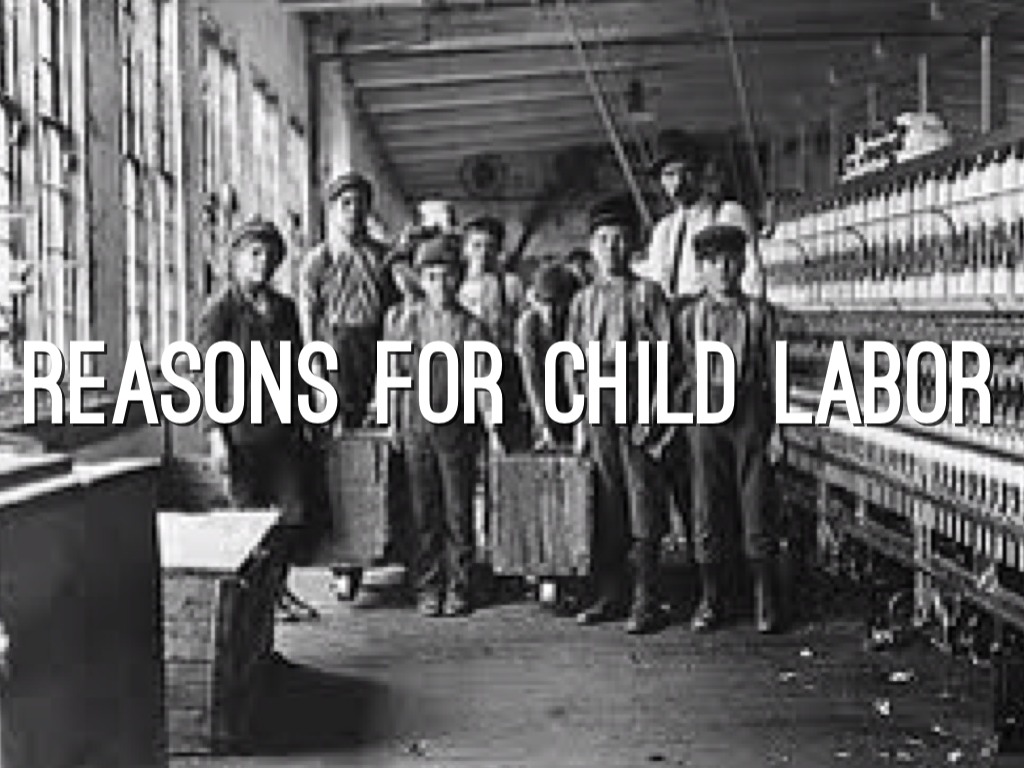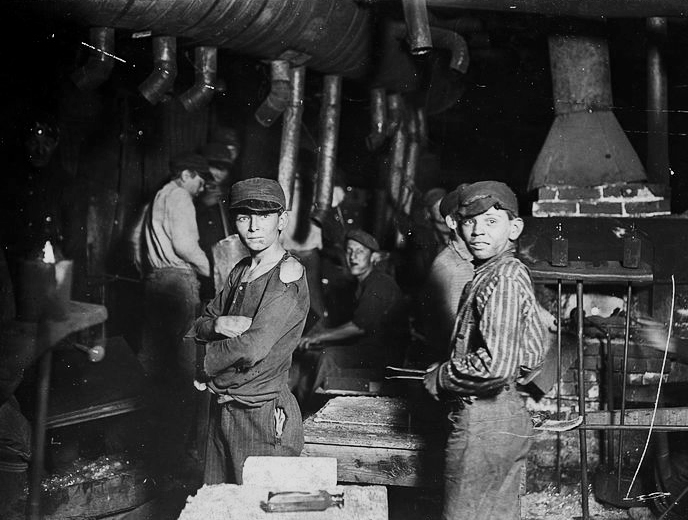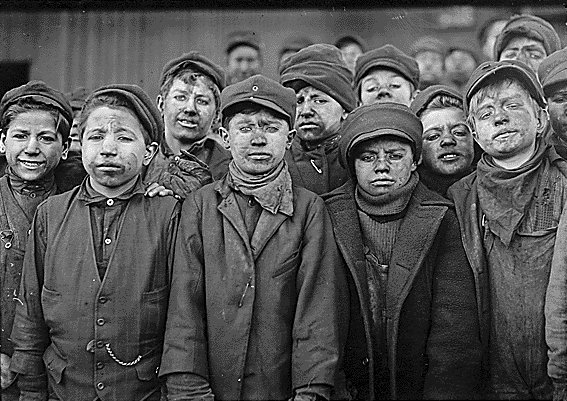Describe the Treatment of Children Who Worked in the Factories.
Less than half that many children had been employed 30 years before. Children working in factories worked in dangerous situations for long hours 14 to 18 hours a day.

Child Labor During The Industrial Revolution By
69 Consistent with this finding one 1906 survey found that 63 percent of employers thought children were not of value to their industry.

. By 1900 roughly 17 million children under the age of 16 worked in factories. The dirtiest jobs were given to the children. Female textile workers often described themselves as mill girls while affirming the virtue of their.
Prior to the war most of the women that did work were from the lower working classes and many of these were minorities. Child labour can result in extreme bodily and mental harm and even death. 86 Although mill supervisors oversaw the children who performed these child-appropriate tasks they were often reluctant to discipline the children.
Up to 24 cash back The Factory Act of 1833 was a major accomplishment for the proper rights of child workers. These young child entrepreneurs have earned millions of dollars and have extended their busienss ventures to multiple countries. Child laborers can also be found in industries such as factories mining and construction and in services such as prostitution.
Factory work inspired women to seek more opportunities and helped foster the womens rights movement. Hard labor at such a young age Working conditions that are deemed safe for adults may not be safe for children who have smaller statures and frailer bodies. Women have always worked outside the home but never before in the numbers or with the same impact as they did in World War II.
Many times a child would be told to clean under machines even while they were running. He found that by not employing children under age 16 he had to pay a little more in wages but the increased rate of productivity and the reduced rate of accidents more than made up for this. In the Lodz ghetto for example the Nazis opened 96 factories.
The term mill girls was occasionally used in antebellum newspapers and periodicals to describe the young Yankee women generally 15 - 30 years old who worked in the large cotton factories. There small size made them ideal for crawling into the tight spaces in around or under machines sometimes while the machines were still running since it would hinder production if a machine were turned off. The child factory workers diet provided very little nourishment giving them just barely the energy they would need for their long working hours.
3rd eye photographerFlickr While most kids stick with lemonade stands some young entrepreneurs take their business much further. Young children were working very long hours in. The ability to work could save ones life but most often only temporarily.
Farragut assisted by a contingent of soldiers attacked a smaller Confederate fleet led by Admiral Franklin Buchanan and three forts that guarded the entrance to Mobile Bay. Those complaining are beaten and abused. Cases of physical sexual and verbal abuse are common and well documented.
In many ways the mill was seen as an extension of the family unit. The working conditions were also very dangerous and not well taken care of. The Act reduced the hours of work for children between eight and thirteen to six and a half a day either in the morning or afternoon no child being allowed to work in both on the same day except on alternate days and then only for ten hours.
Children may be driven into work for various reasons. In southern cotton mills children who. 250 million children between 5 and 14 are forced to work in sweatshops in developing countries.
They were also called female operatives. In 1833 the Government passed a Factory Act to improve conditions for children working in factories. Women in the Work Force during World War II Background.
In the worst forms of sweatshops people are forced to work up to 72 hours straight without sleep. The consequences are staggering. There were little or no safety measures put in place in Victorian times so the occurrence of an injury and even death was not uncommon.
According to History Crunch a child working during the Industrial Revolution typically made between 10 to 20 of an adults wage despite performing the same work. Under pressure from the public many state legislatures passed child labor laws which limited the hours children could work to ten hours per day but employers often disregarded such laws. The ghettos served as bases for utilizing Jewish labor as did forced-labor camps for Jews in occupied Poland.
At the factories children had no rights. It was not uncommon for a person to work more then 12 hours a day and have to work 6 days a week. Only 20 percent said they wished to employ.
There were a variety of attitudes towards women in. Established in 1850 in Cleveland the Female Protective Union sought to improve the conditions faced by women who worked in the garment industry. Child labor in sweatshops.
For one they were cheap labor. Young orphan children in particular would find themselves victim. Occupational death was not uncommon for working Victorian children.
Their products span a plethora of industries including tech software business and even. Many even saw children as key employees with several advantages over their adult counterparts. In the mill as in most other factory industrial settings at the time work appropriate for children was clearly differentiated from work seen as appropriate for adults.
Numerous organizations formed during the early 1800s to assist women working in the factories. Below-minimum wages child labour and appalling conditions likened to a sweatshop a factory or workshop where employees work long hours for low money in conditions that are hazardous to health. The Factory Act of 1844 is an extremely important one in the history of family legislation.
Most often child labour occurs when families face financial challenges or uncertainty whether due to poverty sudden illness of a caregiver or job loss of a primary wage earner. Sometimes people would even lose their limbs because of the terrible working. Jews deemed unproductive by the Nazis were often the first to be shot or deported.
In 1991 American labour activist Jeffrey Ballinger published a report on Nikes factory practices in Indonesia exposing a scandal. Some of the new laws that would focus on the youth in the factories were-No child workers under the age of nine-Children are not to work at night. The Battle of Mobile Bay of August 5 1864 was an engagement of the American Civil War in which a Union fleet commanded by Rear Admiral David G.
With this act children who worked in factories would now be given more safe regulations. Lots of the people that worked in these factories had fingers crushed or completely cut off. Up to 24 cash back Children working in the factories were given very little time to eat usually half an hour for breakfast and lunch so food needed to be quick to eat and nutritious.

Social Welfare History Project National Child Labor Committee

The Children That Lived Through The Industrial Revolution Foundations Of Western Culture

Child Labor Working In The British Industrial Revolution Infogram
No comments for "Describe the Treatment of Children Who Worked in the Factories."
Post a Comment